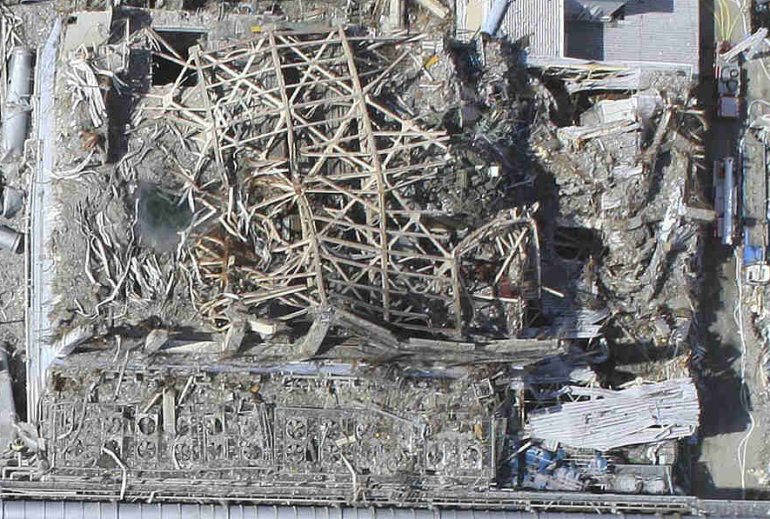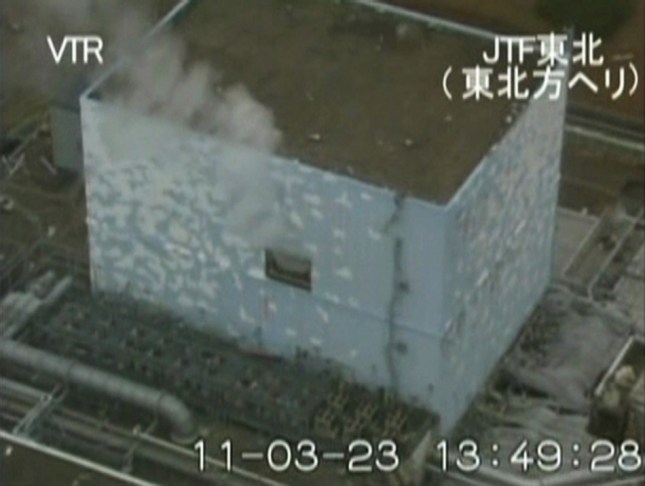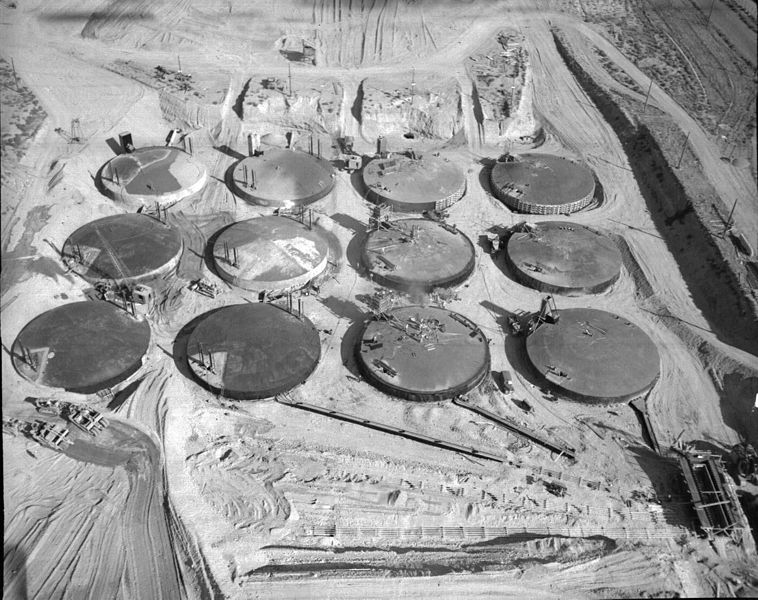On March 11, 2011 an earthquake and tsunami severely damaged four nuclear reactors at the Fukushima Number 1 power plant on the northeast coast of the Japanese island of Honshu.
The Unit Four reactor is a boiling water design fueled with about eighty tons of uranium dioxide in zirconium alloy fuel rods. The primary concrete containment vessel surrounds the core of the reactor and the secondary concrete containment vessel included upper levels which contained pools for storing fuel rods and irradiated equipment.
When the earthquake struck on March 11, the Unit 4 reactor was shut down. The fuel rods had been removed and placed in the pool on the upper level. On March 15 at 6 AM a hydrogen gas explosion at nearby Unit 3 blew two large holes in the walls the upper level of the Unit 4 building. Around 10 AM the spent fuel pool at Unit 4 caught fire releasing radioactive contamination. Employees were evacuated as the radiation in the Unit 4 building rose. The fire was extinguished by noon. Later, it was reported that there had been no sustained release of dangerous radioactive materials.
At 4 PM on March 15 there was concern that the water in the pool might be boil and exposing the fuel rods. Visual inspections and analysis of the water in the pool at the end of April determined that the fuel rods were mostly undamaged. As of 10:30 PM the workers were unable to add water to the pool. TEPCO considered using helicopters to drop water into the Unit 4 building but it was postponed in favor of a plan to use high pressure fire hoses instead.
Photographs from March 16 showed that a large part of the outer wall of the Unit 4 building had collapsed. There was an ongoing debate over whether the water in the Unit 4 spent fuel pond had boiled off completely. By 8 PM on the 16th, there was a plan to use a police water cannon to spray water into the pool. On March 18 it was discovered that the water in the spent fuel pool was vanishing faster than could be explained by evaporation which indicated that the water was leaking out. On March 20 military trucks were used to spray more water into the pool. For several days, seawater was poured into the pool with a concrete pump and also injected with the existing cooling system. Fresh water replaced seawater on March 29.
Analysis of the water in the pool in mid-April indicated that a small number of fuel rods had been damaged and had released cesium-134 and 137 into the environment. Water continued to be pumped into the pool during April to control the rising temperature. There was a fear that too much water could structurally weaken the Unit 4 building. TEPCO decided that the disappearing water was being boiled off and not leaking out. TEPCO began constructing new columns in the Unit 4 building because of a fear that the building might collapse.
In June it was found that there was only one third of the normal amount of water in the spent fuel pool and that some of the fuel rods were exposed. The fuel pool was refilled to the regular level to lower the radiation and temperature that prevented work on the pool. The new steel and concrete columns were completed by the end of June.
Although the spent fuel pool at Fukushima Unit 4 is stable and under control at present, there is widespread concern over the vulnerability of the pool to future earthquakes. Japan is a very seismically active country and another major quake in the Fukushima area is likely. There is over eighty times the radioactive material in the Unit 4 pool than was released at Chernobyl which caused problems over much of Europe. Some say that the radiation that could be released from Unit 4 might threaten the very survival of the human race. Other are more conservative but do agree that the release of the fuel in Unit 4 into the environment would result in serious health and environmental consequences. A group of civic organizations has appealed to the United Nations to help clean up Unit 4. Authorities in the United States consider the Unit 4 pool to be a national security threat. Currently, the Unit 4 spent fuel pool is probably the number one environmental danger in the world.




